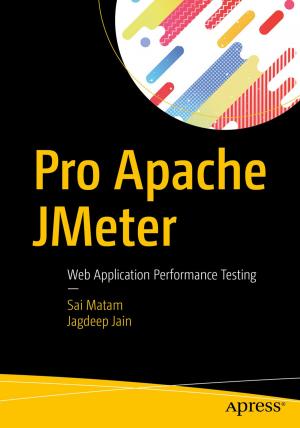Pro Continuous Delivery
With Jenkins 2.0
Nonfiction, Computers, Advanced Computing, Engineering, Computer Engineering, General Computing, Programming| Author: | Nikhil Pathania | ISBN: | 9781484229132 |
| Publisher: | Apress | Publication: | July 3, 2017 |
| Imprint: | Apress | Language: | English |
| Author: | Nikhil Pathania |
| ISBN: | 9781484229132 |
| Publisher: | Apress |
| Publication: | July 3, 2017 |
| Imprint: | Apress |
| Language: | English |
Follow this step-by-step guide for creating a continuous delivery pipeline using all of the new features in Jenkins 2.0 such as Pipeline as a Code, multi-branch pipeline, and more. You will learn three crucial elements for achieving a faster software delivery pipeline: a fungible build/test environment, manageable and reproducible pipelines, and a scalable build/test infrastructure.
Pro Continuous Delivery demonstrates how to create a highly available, active/passive Jenkins server using some niche technologies.
What You'll Learn
-
Create a highly available, active/passive Jenkins server using CoreOS and Docker, and using Pacemaker and Corosync
-
Use a Jenkins multi-branch pipeline to automatically perform continuous integration whenever there is a new branch in your source control system
-
Describe your continuous delivery pipeline with Jenkinsfile
-
Host Jenkins server on a cloud solution
-
Run Jenkins inside a container using Docker
-
Discover how the distributed nature of Git and the “merge before build” feature of Jenkins can be used to implement gated check-in
-
Implement a scalable build farm using Docker and Kubernetes
Who This Book Is For
-
You have experience implementing continuous integration and continuous delivery using Jenkins freestyle Jobs and wish to use the new Pipeline as a Code feature introduced in Jenkins 2.0
-
Your source code is on a Git-like version control system (Git, GitHub, GitLab, etc.) and you wish to leverage the advantages of a multi-branch pipeline in Jenkins
-
Your infrastructure is on a Unix-like platform and you wish to create a scalable, distributed build/test farm using Docker or Kubernetes
-
You are in need of a highly available system for your Jenkins Server using open source tools and technologies
Follow this step-by-step guide for creating a continuous delivery pipeline using all of the new features in Jenkins 2.0 such as Pipeline as a Code, multi-branch pipeline, and more. You will learn three crucial elements for achieving a faster software delivery pipeline: a fungible build/test environment, manageable and reproducible pipelines, and a scalable build/test infrastructure.
Pro Continuous Delivery demonstrates how to create a highly available, active/passive Jenkins server using some niche technologies.
What You'll Learn
-
Create a highly available, active/passive Jenkins server using CoreOS and Docker, and using Pacemaker and Corosync
-
Use a Jenkins multi-branch pipeline to automatically perform continuous integration whenever there is a new branch in your source control system
-
Describe your continuous delivery pipeline with Jenkinsfile
-
Host Jenkins server on a cloud solution
-
Run Jenkins inside a container using Docker
-
Discover how the distributed nature of Git and the “merge before build” feature of Jenkins can be used to implement gated check-in
-
Implement a scalable build farm using Docker and Kubernetes
Who This Book Is For
-
You have experience implementing continuous integration and continuous delivery using Jenkins freestyle Jobs and wish to use the new Pipeline as a Code feature introduced in Jenkins 2.0
-
Your source code is on a Git-like version control system (Git, GitHub, GitLab, etc.) and you wish to leverage the advantages of a multi-branch pipeline in Jenkins
-
Your infrastructure is on a Unix-like platform and you wish to create a scalable, distributed build/test farm using Docker or Kubernetes
-
You are in need of a highly available system for your Jenkins Server using open source tools and technologies















